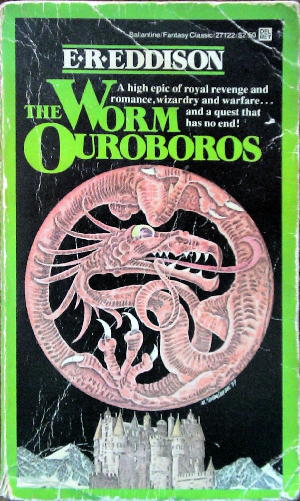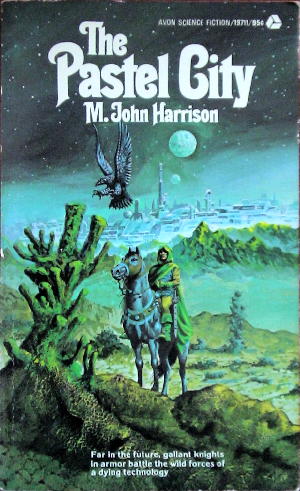Inspirational fantasy fiction
Every game has its own soul, however ragged. Gods & Monsters and its adventures have been inspired by far too many books to list here, but there are a few that should help you, as player or adventure guide, find your way among the ruins of my rules.
- Alexandre Dumas, The Three Musketeers.
- Great stuff. Probably role-played, these guys do things only player characters get away with. And while there’s always a focus on d’Artagnan, it’s a very wide focus. The Three Musketeers also get a lot of screen time, and their screen time, like that of player characters, is usually when they’re together. This changes in later books; it becomes more like a PBEM or maybe even a Polaris-style game. If any one book will give you the feel of Gods & Monsters, it’s The Three Musketeers.
- J.R.R. Tolkien, The Fellowship of the Ring
- I know, it’s almost a cliché to put Tolkien on a list like this. But if you haven’t done it yet, go back and read Lord of the Rings from a gamer’s perspective. Watch how Tolkien builds the “game world”. He starts small; he regularly removes the NPCs from the narrative. The discussion about what to do with the ring in the Last Home? It’s a bunch of player characters bouncing ideas off of non-player characters. Any editor today would tell him it doesn’t belong in a novel. But it does belong in a game. The player characters have choices to make. The Hobbit is arguably a more beautiful novel. But it’s the prequel the game master wrote after Lord of the Rings went off the rails.
- Stephen King, The Dark Tower•
- When I started on Highland back in 1986 and chose “medieval old west after a spiritual cataclysm in a world with weakened walls” as the base idea, I didn’t know that I was traveling a road King had already started or was about to start. I’ve long since given up trying to be completely different from the Dark Tower (as you can see if you read Helter Skelter). Dark Tower doesn’t contain King’s best writing. See Hearts in Atlantis• for that. But it does contain his most compelling characters. Hearts in Atlantis is a modern novel; Dark Tower is an old-school serial.
- John Bellairs•, The Face in the Frost•
- The sorcerors of The Face in the Frost are very modern. You could see Elminster conversing and hobnobbing with each of them. Bellairs builds an amusing layer on the not-quite solid ground of Lovecraft and Dunsany. Like all wizards, he has a wall lined with books. His books include titles such as Six Centuries of English Spells, Nameless Horrors and What to Do About Them, An Answer for Night-Hags, and “the dreaded Krankenhammer of Stefan Schimpf, the mad cobbler of Mainz.” He has a magic mirror; it’s sarcastic and talks too much. Like player characters, when Prospero runs into trouble he tries spells he found years ago and has no idea what they do. And, like players, Bellairs chooses names like “Prospero” and “Roger Bacon” for his characters.
- Lord Dunsany•, The Charwoman’s Shadow•
- There is a magic in Dunsany’s writing that hasn’t been matched since. It is as if he sees the other world through a shadow, and is reporting his gauzy visions. These are not gaming books. But they are inspirational for ideas and mood. The King of Elfland’s Daughter• is probably his best-known work, and it’s great. But it’s the Charwoman’s Shadow I keep seeing gaming ideas in. It’s The Charwoman’s Shadow that provides the quote on the title page of Arcane Lore. The Master wizard of this book is the perfect ancient wizard.
- E.R. Eddison, The Worm Ouroboros, Mistress of Mistresses, A Fish Dinner in Memison•
- Eddison’s Zimiamvian trilogy is in many ways the opposite of Tolkien in everything except size. Eddison goes into excruciating detail about the furniture and the walls, pages and pages of marble and inlay and gold. He makes no attempt at a coherent, self-contained world. His Zimiamvia and Demonlands are a haphazard collection of names, cultures, and ideas. In other words… it’s a lot like the average old-school campaign.
- M. John Harrison•, The Pastel City•
- The Pastel City is an odd bird. The writing is occasionally reminiscent of Dunsany. The adventure is pure swords and sorcery in the old-school style. The theme is perfect Highland. I only discovered The Pastel City a few months ago when a local bookstore went out of business; I recommend looking into it, especially if you like the Swords and Science game style.
- Lewis Carroll, Alice’s Adventures in Wonderland
- Alice in Wonderland is the best book for the layman on game-mastering, but that’s because it’s the best book for the layman on anything. Carroll presents his PC with riddles, magic, magic riddles, strange beasts, strange characters, and unique situations to navigate. It’s full of dated puns, evil villains, and arcane encounters. It’s D&D on laughing gas.
recommendations
- Alice’s Adventures Everywhere
- Alice’s Adventures Underground includes Dodgson’s sketches, and Alice’s Adventures in Wonderland includes Sir John Tenniel’s. Through the Looking Glass contains merely Dodgson’s wonderful text.
- The Charwoman’s Shadow•: Lord Dunsany (paperback)
- Lovecraft said “Dunsany stands dedicated to strange and lovely worlds of fantastic beauty.” This is, I think, his most evocative.
- The Dark Tower•: Stephen King (paperback)
- The first four books in the Dark Tower series will introduce you to King’s magnum opus, and leave you with three more books to enjoy.
- The Face in the Frost•: John Bellairs (paperback)
- Unfortunately not available, this is a beautiful tale. “Prospero and Roger Bacon were wizards. They knew seven different runic alphabets, could sing the Dies Irae all the way through to the end, and knew what a Hand of Glory was. Though they could not make the moon eclipse, they could do some very striking lightning effects and make it look as though it might rain if you waited long enough.”
- A Fish Dinner in Memison•: E. R. Eddison (paperback)
- A fascinating book that takes a philosophy of life and explains it, Stranger-like, as the end and beginning of a fantasy trillogy.
- The Hobbit and The Lord of the Rings
- The best fantasy books I have ever read. “In a hole in the ground there lived a hobbit...” I found the animated movie to be marvelous as well. And the new movies by Peter Jackson are awesome! Great, great stuff.
- Mistress of Mistresses
- I have just finished reading “Mistress of Mistresses”, technically the second volume in E.R. Eddison’s Ouroboros trilogy. This is an incredible work. The further along I read, the more I needed to finish it. Eddison’s fantasy sweeps from strange to romantic, war to love, in a high-fantasy style that is both wordy and readable.
- Viriconium•: M. John Harrison (paperback)
- This collects all of M. John Harrison’s tales of Viriconium; I’ve only read the first, The Pastel City. It alone is worth the price of this collection. At the end of great empires, a few cities remain in the ruins, and a few brave people stand quixotically against the decay of their world.
- The Worm Ouroboros
- This book does everything wrong; under no circumstances would it be published today, except perhaps as a self-published venture, and then it would be used as an example of why self-publishing is wrong. And yet, it’s a wonderful novel.
- The Three Musketeers
- Wherein D’Artagnan, Athos, Porthos, and Aramis meet. The full text of The Three Musketeers and The Four Musketeers.
Gods & Monsters
- Arcane Lore
- Lists of spells, skills, psychic powers, and specialties.
- Helter Skelter
- In the city of sin is a gambling house that was when the world began. In a lost alley is a door behind a door and within it a deck of cards and fortune’s wheel. Upon the deck are forgotten gods; upon the wheel the world rests.
other
- Hearts in Atlantis•: Stephen King (paperback)
- A collection of four beautiful novellas taking place in the sixties, seventies and eighties. The first one, especially, is masterful. All four are connected.
- The King of Elfland’s Daughter•: Lord Dunsany (paperback)
- Lord Dunsany’s best-known work involves a king’s son traveling from his own real kingdom to the land of faerie, to win himself the Elf-king’s daughter as his wife.




